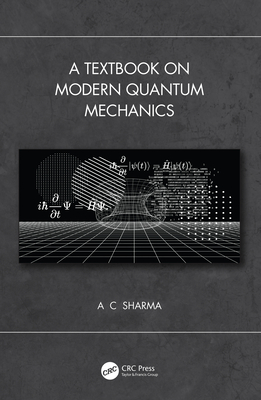Quantum Principles and Particles, Second Edition
暫譯: 量子原理與粒子(第二版)
Wilcox, Walter
- 出版商: CRC
- 出版日期: 2019-08-27
- 售價: $6,820
- 貴賓價: 9.5 折 $6,479
- 語言: 英文
- 頁數: 586
- 裝訂: Hardcover - also called cloth, retail trade, or trade
- ISBN: 1138090417
- ISBN-13: 9781138090415
-
相關分類:
量子 Quantum
-
其他版本:
Quantum Principles and Particles, Second Edition
海外代購書籍(需單獨結帳)
商品描述
This textbook offers a unique introduction to quantum mechanics progressing gradually from elementary quantum mechanics to aspects of particle physics. It presents the microscopic world by analysis of the simplest possible quantum mechanical system (spin 1/2). A special feature is the author's use of visual aids known as process diagrams, which show how amplitudes for quantum mechanical processes are computed. The second edition includes a new chapter and problems on time-dependent processes, in addition to new material on quantum computing and improved illustrations.
Key Features:
- Provides a completely updated text with expanded contents.
- Includes a brand new chapter on time-dependent processes and expanded coverage of recent developments in particle physics.
- Emphasizes a visual approach employing process diagrams and utilizing new figures.
- Incorporates quantum information theory in a new appendix, with other helpful supplements on notation, lattice models, weak flavor mixing, and numerical simulations.
商品描述(中文翻譯)
這本教科書提供了一個獨特的量子力學入門,逐步從基本的量子力學進展到粒子物理的各個方面。它通過分析最簡單的量子力學系統(自旋 1/2)來呈現微觀世界。一個特別的特色是作者使用的視覺輔助工具,稱為過程圖,這些圖示展示了量子力學過程的振幅是如何計算的。第二版新增了一章關於時間依賴過程的內容,並增加了有關量子計算的新材料和改進的插圖。
主要特色:
- 提供完全更新的文本,內容擴展。
- 包含全新的一章,專注於時間依賴過程,並擴展了對粒子物理最新發展的涵蓋。
- 強調使用過程圖的視覺方法,並利用新的圖形。
- 在新的附錄中納入量子資訊理論,並提供其他有用的補充資料,包括符號、晶格模型、弱味混合和數值模擬。
作者簡介
Walter Wilcox is professor of physics at Baylor University in Waco, TX, USA, and presently serves as Secretary/Treasurer in the Texas Section of the American Physical Society. He earned a PhD in elementary particle physics from UCLA in 1981 under the guidance of Dr. Julian Schwinger. He has also taught and conducted research at Oklahoma State University (1981-1983), TRIUMF Laboratory (1983-1985), and the University of Kentucky (1985-1986). He has been awarded grants from the National Science Foundation in theoretical physics, and, in collaboration with Ron Morgan, in applied mathematics. His research focuses on the development and use of numerical methods in the field of theoretical physics known as "lattice QCD." He lives in Waco, Texas, and loves to go hiking and camping.
作者簡介(中文翻譯)
沃爾特·威爾科克斯是美國德克薩斯州韋科的貝勒大學物理學教授,目前擔任美國物理學會德克薩斯分會的秘書/財務主管。他於1981年在加州大學洛杉磯分校(UCLA)獲得基本粒子物理學的博士學位,指導教授為朱利安·施溫格博士。他曾在俄克拉荷馬州立大學(1981-1983)、TRIUMF 實驗室(1983-1985)和肯塔基大學(1985-1986)教授和進行研究。他曾獲得國家科學基金會在理論物理學方面的資助,並與羅恩·摩根合作進行應用數學的研究。他的研究專注於在理論物理學領域中發展和使用數值方法,該領域稱為「格點量子色動力學」(lattice QCD)。他目前居住在德克薩斯州韋科,喜歡健行和露營。
目錄大綱
SECTION I QUANTUM PRINCIPLES
1 Perspective and Principles
2 Particle Motion in One Dimension
3 Some One-Dimensional Solutions to the Schrödinger Equation
4 Hilbert Space and Unitary Transformations
5 Three Static Approximation Methods
6 Generalization to Three Dimensions
SECTION II QUANTUM PARTICLES
7 The Three-Dimensional Radial Equation
8 Addition of Angular Momenta
9 Spin and Statistics
10 Quantum Particle Scattering
11 Connecting to the Standard Model
Appendices
A Notation Comments and Comparisons
B Lattice Models
C 2-D Harmonic Oscillator Wave Function Normalization
D Allowed Standard Model Interactions
E The Ising Model and More
F Weak Flavor Mixing
目錄大綱(中文翻譯)
SECTION I QUANTUM PRINCIPLES
1 Perspective and Principles
2 Particle Motion in One Dimension
3 Some One-Dimensional Solutions to the Schrödinger Equation
4 Hilbert Space and Unitary Transformations
5 Three Static Approximation Methods
6 Generalization to Three Dimensions
SECTION II QUANTUM PARTICLES
7 The Three-Dimensional Radial Equation
8 Addition of Angular Momenta
9 Spin and Statistics
10 Quantum Particle Scattering
11 Connecting to the Standard Model
Appendices
A Notation Comments and Comparisons
B Lattice Models
C 2-D Harmonic Oscillator Wave Function Normalization
D Allowed Standard Model Interactions
E The Ising Model and More
F Weak Flavor Mixing
















